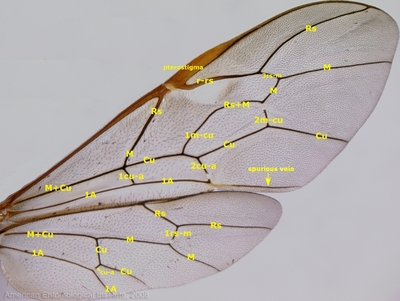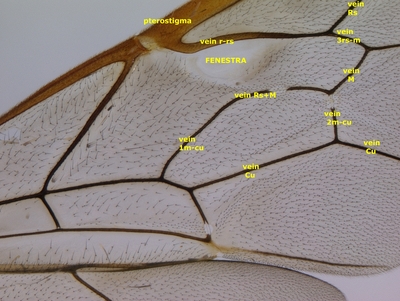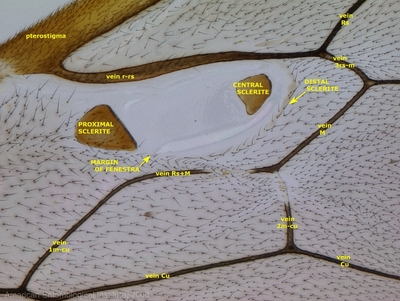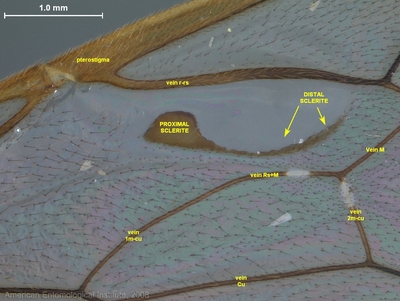
GIN Home
Ichneumonid Morphology
Subfamily Key
Lists of World Genera
Acaenitinae
Brachycyrtinae
Collyriinae
Lycorininae
Ophioninae
Poemeniinae
Rhyssinae
Stilbopinae
Xoridinae

The fore wing of ophionines is distinguished by:
- a single 'intercubital' vein (presumably 3rs-m) that is apicad vein 2m-cu, and
- the presence of a spurious vein that extends apically from the apex of vein 1A.
Site credits and citation. Questions? E-mail: aei[at]aei.cfcoxmail.com







